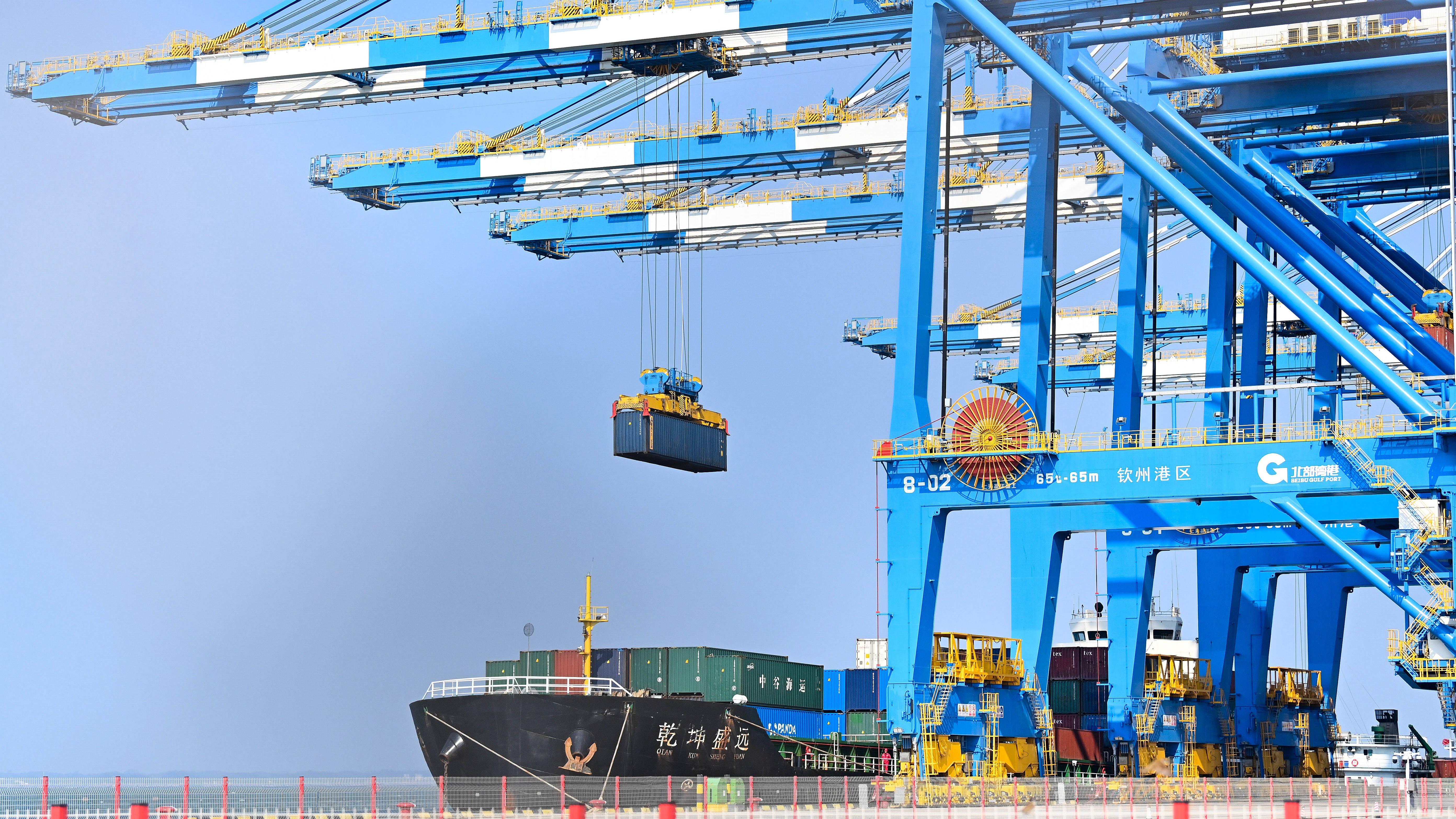 Automated cranes deliver containers at Qinzhou Port in Qinzhou, South China's Guangxi Zhuang autonomous region, in February. (PHOTO / XINHUA)
Automated cranes deliver containers at Qinzhou Port in Qinzhou, South China's Guangxi Zhuang autonomous region, in February. (PHOTO / XINHUA)
HEFEI - On June 2, the day the Regional Comprehensive Economic Partnership (RCEP) entered into force in the Philippines, Chizhou Customs in east China's Anhui province issued an RCEP Certificate of Origin for a batch of goods exported to the Southeast Asian country.
With that piece of paper, Anhui Xingxin New Materials Co, Ltd saved a 28,000 yuan (about $3,937.28) tariff for its export of 6.25 tonnes of industrial chemicals.
"This reduces our costs and helps us further expand overseas markets," said Lyu Yuxiang, who's in charge of the supply and marketing department of the company.
In addition to the Philippines, the company also has close ties with business partners in other RCEP member countries such as Vietnam, Thailand, and the Republic of Korea, boosted by a slew of trade facilitation measures.
The RCEP was signed in November 2020 and entered into force on Jan 1, 2022, with the aim of gradually eliminating tariffs on over 90 percent of goods traded among its members
"The implementation of the RCEP has brought us multiple benefits such as tariff reduction and speedy customs clearance," said Lyu, adding that the company's foreign trade volume exceeded $1.2 million in 2022 and is expected to reach $2 million this year.
ALSO READ: Countries trade at full throttle as RCEP comes in full force
The steady development of the RCEP has injected strong confidence into Chinese foreign trade companies. During a forum held on Friday and Saturday in Huangshan City, Anhui, some business representatives voiced passion for more trade and investment in RCEP member countries.
Yang Jun, chairman of Conch Group Co, Ltd, a leader in China's cement industry, said on Friday that the company will actively develop trade with more RCEP member countries and build a high-quality and efficient RCEP trade supply chain.
"At the same time, we will strengthen industrial cooperation, export advanced production capacity to RCEP member countries and accelerate the development of the local cement industry and urban construction," said Yang.
With the theme of Regional Cooperation for a Win-win Future, the 2023 RCEP Local Governments and Friendship Cities Cooperation (Huangshan) Forum aimed to enhance mutual understanding among local governments of RCEP member countries, and explore potential business opportunities.
ALSO READ: Official: RCEP marks 'milestone' for Philippines
A total of 13 agreements on trade, culture, and friendship cities were signed during the event, and a friendship province relationship emerged between Anhui province of China and Attapeu province of Laos.
The RCEP comprises 15 members - the ten Association of Southeast Asian Nations (ASEAN) member states, China, Japan, the Republic of Korea, Australia, and New Zealand. The RCEP was signed in November 2020 and entered into force on Jan 1, 2022, with the aim of gradually eliminating tariffs on over 90 percent of goods traded among its members.
In 2022, trade between China and other RCEP members increased 7.5 percent year-on-year to 12.95 trillion yuan (about $1.82 trillion), accounting for 30.8 percent of the country's total foreign trade value, according to the General Administration of Customs of China.
"I'm glad the statistics show that the growth in China's foreign trade with RCEP countries also includes increasing trade with ASEAN member states. For example, China's trade with Indonesia, Singapore, Myanmar, Cambodia, and Laos grew by over 20 percent on a yearly basis," said Kao Kim Hourn, ASEAN secretary-general, via video link at the forum on Friday.
READ MORE: Experts urge integration at RCEP forum
"These numbers demonstrate the economic benefits of the RCEP Agreement," he added.


